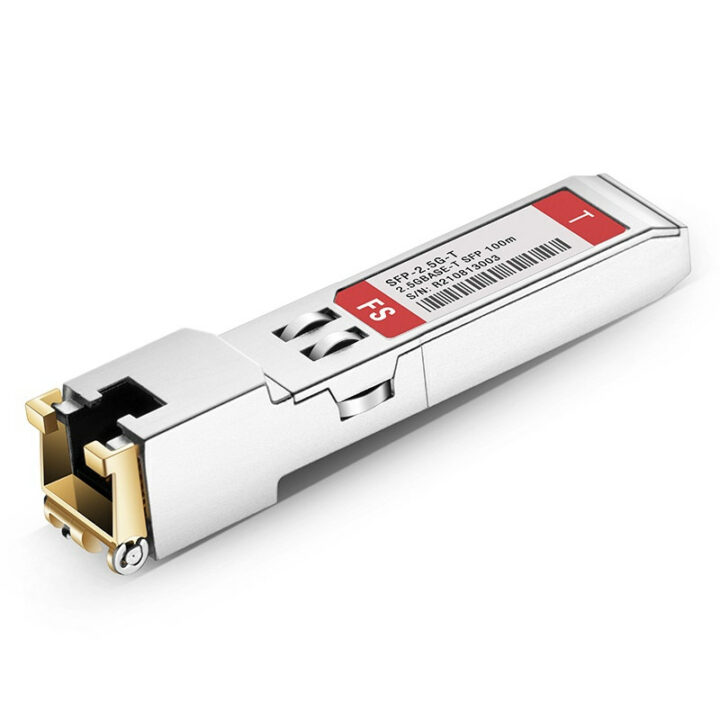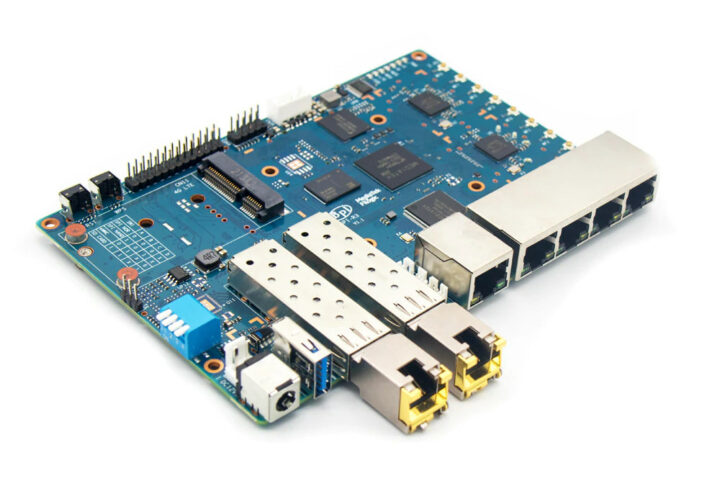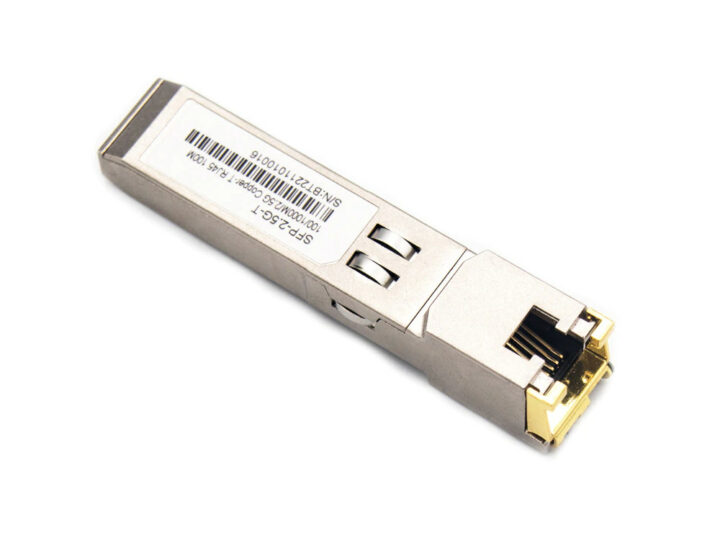Banana Pi has started selling an inexpensive 2.5Gbps SFP to RJ45 adapter for their Banana Pi BPI-R3 WiFi 6 router board that goes for $17.89 plus shipping ($25 shipped here) on Aliexpress.
The BPI-R3 router includes five Gigabit Ethernet RJ45 ports as well as two 2.5GbE SFP cages, but since not everybody has equipment that takes SFP cables, they used to sell it with a $30 TP-Link adapter. The company now appears to have found a cheaper model marked “SFP-2.5G-T” module that works with their board.
It’s designed to be inserted into one of the 2.5GbE SFP cages and provide a more common 2.5GbE RJ45 port to the user. There’s very little information about the module except its designed with an up to 100-meter cable, and the serial number BT2211010016 only points to Banana Pi’s Wiki. But I don’t think the company designed its own adapter and found another Wiki for the BPI-R3 board that refers to an “SFP-2.5G-T” module of the same name from fs.com. The author of the wiki purchased it for around 50 € in Germany, after failing to have the Mikrotik S+RJ10 1G/2.5G/10G adapter getting recognized by the Banani Pi board.

The design is slightly different so it’s not the same SFP-2.5G-T. While looking at the topic, I found some adapters on Amazon, most of which are for $40 to $50, except one that is sold for $24.99. Some people complain that it does not work with Ubiquiti Aggregation Switch, but as I understand it because the switch is using 10GbE SFP cages, and this type of passive adapter only works at the stipulated speed. In other words, you can connect the SFP-2.5G-T module or similar to a 2.5GbE SFP cage, but it won’t work with 10GbE, 5GbE, or even gigabit Ethernet.
Besides the Banana Pi adapter, it’s also possible to purchase other 2.5Gbps SFP to RJ45 adapters on Aliexpress with a similar price, or a bit lower, and even under $20 shipped per unit if you can purchase a pack of ten (There’s a one-dollar discount with coupon N97EHTBFXV7J).


Jean-Luc started CNX Software in 2010 as a part-time endeavor, before quitting his job as a software engineering manager, and starting to write daily news, and reviews full time later in 2011.
Support CNX Software! Donate via cryptocurrencies, become a Patron on Patreon, or purchase goods on Amazon or Aliexpress





